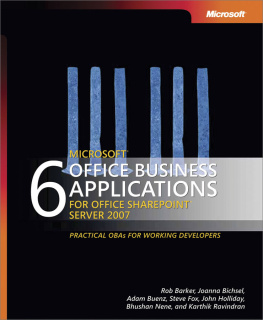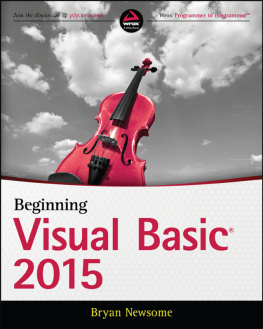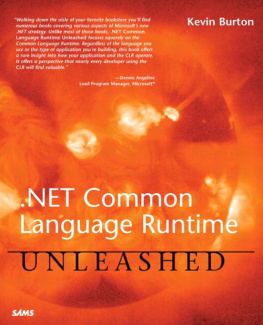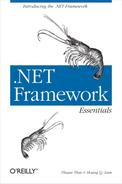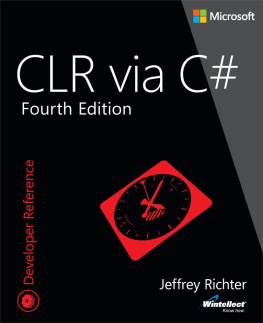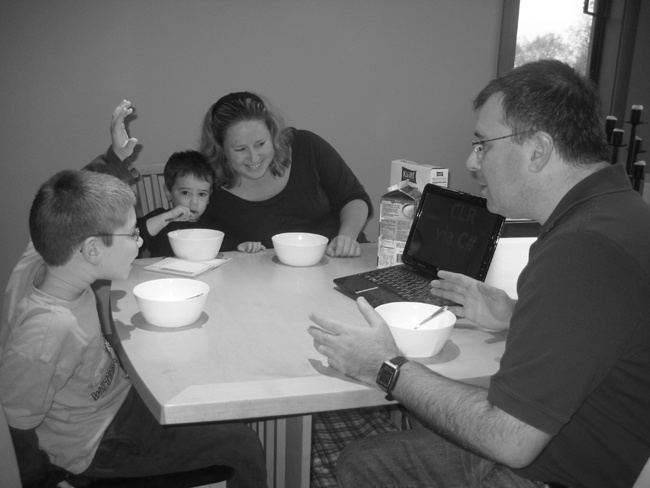Foreword
At first, when Jeff asked me to write the foreword for his book, I was so flattered! He must really respect me, I thought. Ladies, this is a common thought process errortrust me, he doesn't respect you. It turns out that I was about #14 on his list of potential foreword writers and he had to settle for me. Apparently, none of the other candidates (Bill Gates, Steve Ballmer, Catherine Zeta-Jones, ) were that into him. At least he bought me dinner.
But no one can tell you more about this book than I can. I mean, Catherine could give you a mobile makeover, but I know all kinds of stuff about reflection and exceptions and C# language updates because he has been talking on and on about it for years. This is standard dinner conversation in our house! Other people talk about the weather or stuff they heard at the water cooler, but we talk about .NET. Even Aidan, our six-year-old, asks questions about Jeff's book. Mostly about when he will be done writing it so they can play something "cool." Grant (age 2) doesn't talk yet, but his first word will probably be "Sequential."
In fact, if you want to know how this all started, it goes something like this. About 10 years ago, Jeff went to a "Secret Summit" at Microsoft. They pulled in a bunch of industry experts (Really, how do you get this title? Believe me, this isn't Jeff's college degree), and unveiled the new COM. Late that night in bed (in our house, this is what we discuss in bed), he talked about how COM is dead. And he was enchanted. Lovestruck, actually. In a matter of days he was hanging around the halls of Building 42 on Microsoft's Redmond campus, hoping to learn more about this wonderful .NET. The affair hasn't ended, and this book is what he has to show for it.
For years, Jeff has told me about threading. He really likes this topic. One time, in New Orleans, we went on a two-hour walk, alone, holding hands, and he spoke the whole time about how he had enough content for a threading book: The art of threading. How misunderstood threading in Windows is. It breaks his heart, all those threads out there. Where do they all go? Why were they created if no one had a plan for them? These are the questions of the universe to Jeff, the deeper meanings in life. Finally, in this book, he has written it down. It is all here. Believe me folks, if you want to know about threading, no one has thought about it more or worked with it more than Jeff has. And all those wasted hours of his life (he can't get them back) are here at your disposal. Please read it. Then send him an e-mail about how that information changed your life. Otherwise, he is just another tragic literary figure whose life ended without meaning or fulfillment. He will drink himself to death on diet soda.
This edition of the book even includes a new chapter about the runtime serializer. Turns out, this is not a new breakfast food for kids. When I figured out it was more computer talk and not something to put on my grocery list, I tuned it out. So I don't know what it says, but it is in here and you should read it (with a glass of milk).
My hope is that now he is finished talking about garbage collection in theory and can get on with actually collecting our garbage and putting it on the curb. Seriously people, how hard is that?
Folks, here is the clincherthis is Jeffrey Richter's magnum opus. This is it. There will be no more books. Of course, we say this every time he finishes one, but this time we really mean it. So, 13 books (give or take) later, this is the best and the last. Get it fast, because there are only a limited number and once they are gonepoof. No more. Just like QVC or something. Back to real life for us, where we can discuss the important things, like what the kids broke today and whose turn is it to change the diapers.
Kristin Trace (Jeffrey's wife)
November 24, 2009
Figure 1. A typical family breakfast at the Richter household
Introduction
It was October 1999 when some people at Microsoft first demonstrated the Microsoft .NET Framework, the common language runtime (CLR), and the C# programming language to me. The moment I saw all of this, I was impressed and I knew that it was going to change the way I wrote software in a very significant way. I was asked to do some consulting for the team and immediately agreed. At first, I thought that the .NET Framework was an abstraction layer over the Win32 API and COM. As I invested more and more of my time into it, however, I realized that it was much bigger. In a way, it is its own operating system. It has its own memory manager, its own security system, its own file loader, its own error handling mechanism, its own application isolation boundaries (AppDomains), its own threading models, and more. This book explains all these topics so that you can effectively design and implement software applications and components for this platform.
I have spent a good part of my life focusing on threading, concurrent execution, parallelism, synchronization, and so on. Today, with multicore computers becoming so prevalent, these subjects are becoming increasingly important. A few years ago, I decided to create a book dedicated to threading topics. However, one thing led to another and I never produced the book. When it came time to revise this book, I decided to incorporate all the threading information in here. So this book covers the .NET Framework's CLR and the C# programming language, and it also has my threading book embedded inside it (see Part V, ).
It is October 2009 as I write this text, making it 10 years now that I've worked with the .NET Framework and C#. Over the 10 years, I have built all kinds of applications and, as a consultant to Microsoft, have contributed quite a bit to the .NET Framework itself. As a partner in my own company, Wintellect (http://Wintellect.com), I have worked with numerous customers to help them design software, debug software, performance-tune software, and solve issues they have with the .NET Framework. All these experiences have really helped me learn the spots that people have trouble with when trying to be productive with the .NET Framework. I have tried to sprinkle knowledge from these experiences through all the topics presented in this book.






